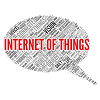IoT: Just a Fad or Worth the Buzz?

By Guilherme Spina, V2COM
The Internet itself was once thought of as a technology fad. Skeptics said it wouldn't amount to much and that businesses that invested in the Internet would fail. Well, we now know how that "fad" turned out and history may be repeating itself as we see the Internet of Things (IoT) gaining momentum and critics looking for its faults and transitory timeline.
No matter which way you slice it, "The Internet of things" or IoT industry is about to boom and everyone from businesses leaders to IT managers to employees need to recognize that the next big thing in technology is already here.
Simply put, IoT refers to network interconnectivity in which everyday objects, machines and hardware are able to communicate data without the need for human-to-computer interaction. This is sometimes also referred to as machine-to-machine or M2M communication.
Lately, the tech media appears to be solely focusing on the sensational side of IoT, which includes popular consumer gadgets like wearables, smart-home thermostats and self-driving cars. Although these new products offer a lot of excitement for the consumer crowd, some of the most practical and groundbreaking advancements in IoT can be seen in the Industrial Internet of Things (IIoT) and industries that specifically relate to the manufacturing, oil and gas and utility sectors.
Analyst firm, Gartner, recently reported, "the term Internet of Things is at the peak of the hype cycle" - and for good reason. Companies large and small are beginning to see the unlimited possibilities of exploring how IoT can directly relate to their bottom-line.
Interconnectivity Evolved
According to industry experts, the current state of the Internet is almost completely dependent on humans interacting with computers through the manual entry of data. It's no secret that every day our attention spans get smaller and our time becomes more and more limited. With that said, it's easy to understand how the next evolutionary step in technology would be creating a solution to eliminate the need for human oversight as it relates to tedious tasks, such as manual equipment monitoring and/or data entry. By connecting the Web to everyday objects in the world around us, we are able to literally account for everything in real-time and have the ability to translate that information into a tremendous reduction in costs for companies, as well as the possibility of virtually eliminating wasted time and resources.
This promise of IoT success can already be seen as companies like Oracle partner with IoT solution providers to leverage its Oracle Java ME Embedded platform in order to spur innovation and development for entirely new solutions based on M2M technology. This kind of innovation is desperately needed in an industry that is predicted to reach 50 billion connected devices by 2020.
Common IoT Challenges
At this point, we understand that IoT solutions allow for a company's smart, connected products to offer exponential opportunities for improved functionality and capabilities, greater reliability and increased product utilization - all of which transcend traditional product boundaries.
As we progress to this next phase of Internet connectivity, a few challenges present themselves, specifically as it relates to IoT solution providers and hardware development. These companies have to consider the right sensors, communication ports and connectivity issues tied to power management and energy consumption, while keeping in mind that security is key to IoT and must be present to prevent tampering and illegal data access. Additionally, software development must make decisions on which protocols to use to send data securely to the cloud, how to schedule tasks, store messages, manage and monitor the application lifecycle. Finally, all of these factors have to come together and be integrated to the right systems, which are extremely complex in their own right.
These IoT complexities present the biggest innovation hurdles and in order for these solutions to bear fruit, they will need to be extremely agile. This means that in order to rapidly create a minimum viable product or a product that companies want with the right set of functionalities built with the least possible effort, time and money invested in its development, solution providers will need to treat hardware as software. This innovative approach allows for IoT components to be developed with future upgrades and maintenance in mind. Industry standards are constantly changing and equipment is constantly updated, meaning IoT stakeholders must be able to update and change hardware parts without having to worry as much about the implications on other hardware and software parts.
What's in Store?
Companies that develop and leverage IoT with the future in mind will ultimately provide core offerings and products that effectively serve as an operating system that removes the complexity of data protocols, sensors interfaces, security, microprocessors architecture, software application language and wireless connectivity to create seamless, device intelligence.
It's clear that IoT is here to stay. In fact, it's estimated that more than 99 percent of physical objects are currently unconnected to the Internet of Things. Technology industry insiders predict that this will quickly change as more and more products integrate themselves into smart grid technologies.
When all is said and done, we are still at the early stages of the IoT phenomenon. There's a lot more to come as even more products become "smarter" and as we get closer to living in a world that's only been hypothesized about in the movies. The key to getting there means that the IoT industry will have to create a system that is able to rapidly evolve and adapt as certain priorities shift.
Guilherme Spina is the founder and CEO of V2COM, a platform to turn products into intelligent-connected devices.

Subscribe to Our Newsletter!
Latest in Marketing








